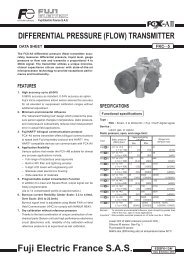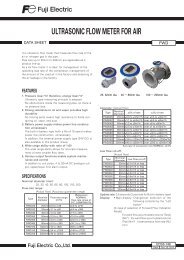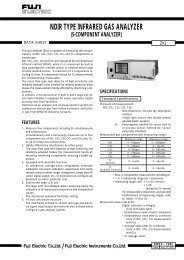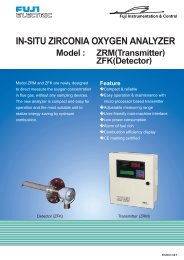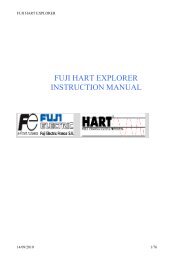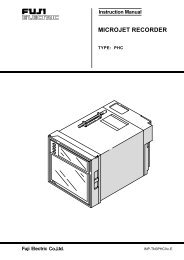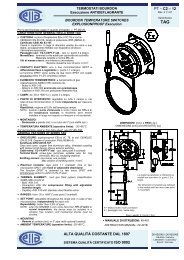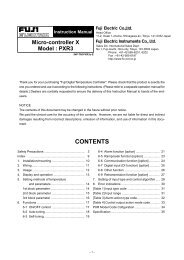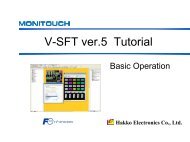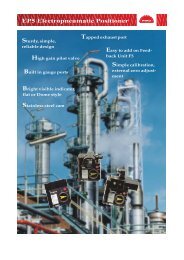P2000 IOM EN - PMV Positioners
P2000 IOM EN - PMV Positioners
P2000 IOM EN - PMV Positioners
Create successful ePaper yourself
Turn your PDF publications into a flip-book with our unique Google optimized e-Paper software.
FunctionThe <strong>PMV</strong> E/P Positioner function is based on torquebalance. Direct current, 4-20 mA or 0-20 mA acting asinput signal creates, in the force coil (53) in the permanentmagnet (50) field, a force proportional to thesignal and, on the beam (92), a corresponding torqueThe position of the cylinder (C) piston is converted bymeans of the feedback linkage (L), cam (42), lower arm(21) and spring (40), to a force proportional to theposition of the cylinder (C) piston and, on the beam(92) a counter torque. When in balance, the cylinderposition equals the input signal value.The nozzle (114) without friction senses the balance ofthe beam (92). When, for example, the signal isincreased the torque corresponding to the signal onthe beam (92) will increase and the beam (92) will turnclock-wise. The nozzle (114) closes, and the nozzlepressure increases. The diaphragm assembly movesdownwards as does the spool (68) of the pilot valveactivated by the balancearm (57). Supply airflowsthrough connection C2 andairfrom the ”minus”chamberofthe cylinder(L) is exhausted throughconnection C1.Differential pressure is created in the cylinder, and thepiston will travel ”plus” until the torque change onthe beam (92), created by the piston position change,rebalances the beam (92) positionand the nozzlepressure. The diaphragm assembly will return toequilibrium position with the balance arm (57) guidingthe spool (68) to mid position. The piston of thecylinder (C) will stop in the position corresponding tothe new input signal.A change in position ofthe balance arm (57) creates,through the spring (93), anegative feedback torque onthe beam (92). Stable operationis thus achievedin spiteof possible great static amplification or sensitivity.The position of the spring (93) can be changed alongthe beam (92) and the balance arm (57) in order toadjust positioner gain, and thus the dynamics of thepositioner. The positioner can be adjusted to matchany small or large actuator.The lower arm (21) has a mechanism for zeroadjustments. The beam (92) has the mechanism foradjusting the range. To reverse the positioner actionthe cam (42) is flipped over and the pipe cormectionsC1 and C2 are interchanged.Split range is available by choosing the right curve onthe cam (42). Non-linear function is achieved byreshaping the cam (42). Such cams are available from<strong>PMV</strong>.The <strong>PMV</strong> E/P Positioner can also be used as a singleacting positioner by simply plugging one of theports C1 or C2.– 5 –P-2000,2020,2050 and Ex-manual from <strong>PMV</strong> 13794-99.6




